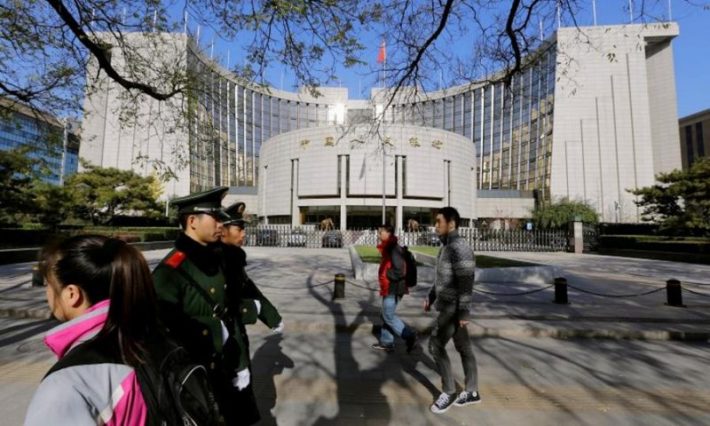China trimmed its benchmark lending rate and cut its mortgage reference rate by a bigger margin to support an economy battered by Covid outbreaks and a property crisis.
The People’s Bank of China (PBOC) lowered the one-year loan prime rate (LPR) by 5 basis points on Monday to 3.65%, a smaller reduction than the 10 basis points economists expected. The five-year LPR was cut by a deeper 15 basis points to 4.3% in a bid to revive home buying.
The central bank is walking a tightrope in its efforts to prop up growth. Too much stimulus would worsen inflationary pressures and risk capital flight as the US and other economies hike interest rates aggressively.
“Policy is being eased but not dramatically,” said Sheana Yue, China economist at Capital Economics. “The PBOC still appears reluctant to embrace large-scale stimulus despite a slowdown in credit growth.”
Narrowly Avoided Contraction
The cuts will lower interest payments on existing loans, taking some pressure off indebted firms, and also nudge down the price of new loans, she said. The much larger cut to the 5-year rate suggests the PBOC is particularly concerned about problems in the housing market, she added.
Capital Economics anticipates two more 10 bps cuts to the PBOC policy rates over the remainder of this year and forecasts a bank reserve requirement ratio reduction next quarter.
The one-year LPR was last reduced in January. The five-year tenor was last lowered in May.
China’s economy, the world’s second-biggest, narrowly avoided contracting in the second quarter as widespread lockdowns and a property crisis took a heavy toll on consumer and business confidence.
Beijing’s strict ‘zero-Covid’ strategy remains a drag on consumption, and over recent weeks cases have rebounded again. Adding to the gloom, a slowdown in global growth and persistent supply-chain snags are undermining chances of a strong revival in China.
The LPR cuts come after the PBOC surprised markets last week by lowering the medium-term lending facility (MLF) rate and another short-term liquidity tool, as a string of recent data showed the economy was losing momentum amid slowing global growth.
ALSO SEE: China’s Farmers, Factory Owners Battle Heatwave, Power Cuts
Yuan Near Two-Year Lows
Shares of Chinese developers listed in Hong Kong rose 1.7%, while China-listed property stocks were relatively stable in morning deals.
But worries over widening policy divergence with other major economies dragged the Chinese yuan to almost a two-year low. The onshore yuan last traded at 6.8232 per dollar.
In a Reuters poll conducted last week, 25 out of 30 respondents predicted a 10-basis-point reduction to the one-year LPR. All of those in the poll also projected a cut to the five-year tenor, including 90% of them forecasting a reduction larger than 10 bps.
Analysts Cut GDP Forecasts
A raft of data, released last week, showed the economy unexpectedly slowing in July, prompting some global investment banks, including Goldman Sachs and Nomura, to revise down their GDP growth forecasts.
Goldman lowered its forecast for the year to 3% from 3.3% previously, far below Beijing’s target of around 5.5%. In a tacit acknowledgement of the challenge in meeting the GDP target, the government omitted a mention of it in a recent high profile policy meeting.
The deeper cut to the mortgage reference rate underlines efforts by policymakers to stabilize the property sector after a string of defaults among developers and a slump in home sales hammered consumer demand.
Sources last week said that China will guarantee new onshore bond issues by a few select private developers to support the sector, which accounts for a quarter of the national GDP.
The LPR cut was necessary, “but the size of the reduction was not enough to stimulate financing demand,” said senior China strategist at ANZ, Xing Zhaopeng.
Goldman economists also predicted more easing but noted that policymakers were facing a testing time.
The PBOC might not be in a “rush to deliver more interest rate cuts,” because of “rising food prices and potential spillover effects from developed markets’ monetary policy tightening,” they said
- Reuters with additional editing by Jim Pollard
ALSO SEE:
China Seen Cutting Key Rates Monday to Steady Wobbly Economy
China’s Xiaomi Posts 20% Revenue Slump on Covid Curbs
China’s First Listed Rental REITs 100 Times Oversubscribed
























